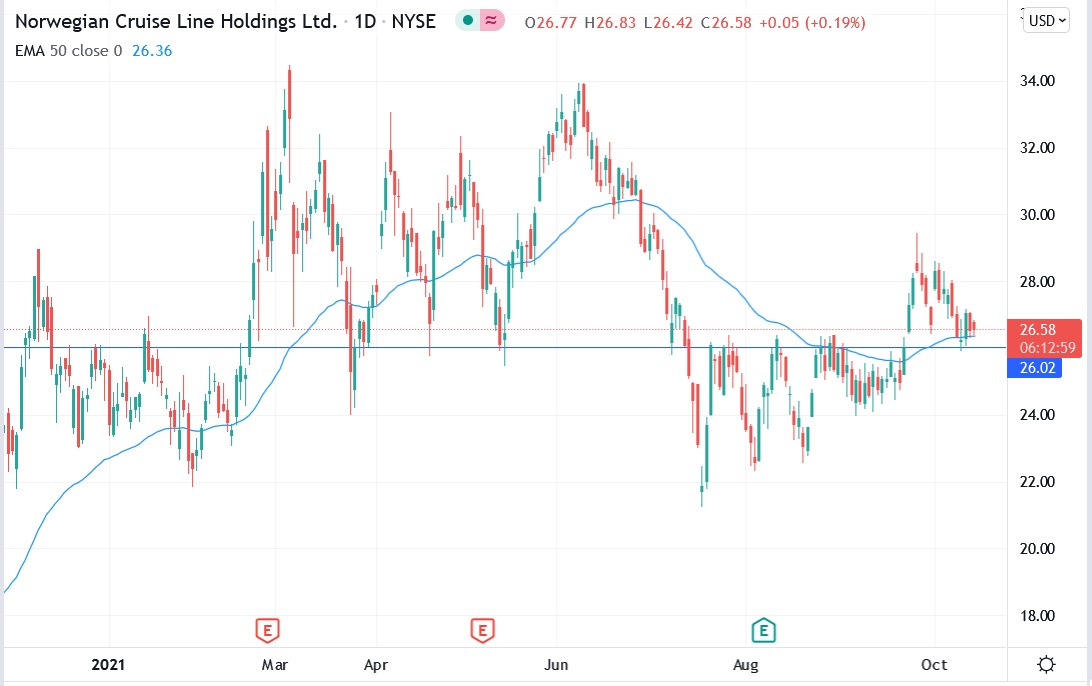Norwegian Cruise Line Holdings Ltd (NYSE: NCLH) stock price has fallen 9.78% from its September highs, and most investors are wondering when the trend will reverse?
Luckily, investors might not have to wait long if the picture painted by NCLH’s stock price chart plays out as expected.
According to the cruise operators’ daily chart below, its shares are trading at the 50-day EMA line, which could trigger the next rally phase.
NCLH stock is also trading above a crucial support level that has been tested in the past and held both as support and resistance.
Therefore, there is a strong likelihood that the support level shall hold this time around.
On the fundamental front, Norwegian Cruise Lines has experienced strong demand amid a surge in bookings due to the pent-up demand created by the coronavirus pandemic lockdowns.
Like its peer Carnival cruises, NCLH intends to have its entire fleet operational by April 2022.
As more countries vaccinate a large proportion of their populations, they are more likely to lift all the restrictions affecting the cruise ship industry, fueling further demand for the company’s voyages.
The cruise ship operator has a fleet of 28 ships and plans to add nine more ships to its fleet by 2027, resulting in higher revenues and profits going forward.
However, investors are concerned about the company’s massive debt accumulated during the coronavirus lockdown period to keep its operations afloat.
Investors looking for exposure to the industry could buy at current levels with the expectation of riding the potential rally. However, a break below the support level would invalidate the bullish thesis.
*This is not investment advice. Always do your due diligence before making investment decisions.
Norwegian Cruise Line stock price.

NCLH stock price has fallen 9.78% from its September high of $29.46 to its current price of $26.58. Can they reverse course?
Should you invest in Norwegian Cruise Line shares?
If you’re a smart investor, you will know that having large-cap stocks in your portfolio is vital. They are more mature companies, considered safer investments, trade with less volatility, have greater analyst coverage, and in most cases, have a steady dividend stream. Due to the current market environment, we think now is the perfect time to add large-cap stocks to your portfolio. But which large-cap shares should you buy? Our stock analysts regularly review the market and share their picks for some of the best large-caps to invest in




